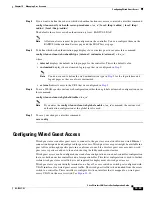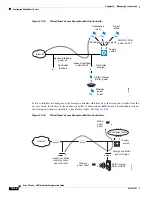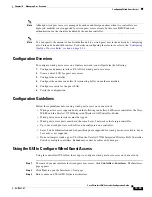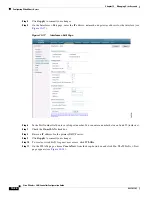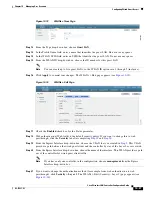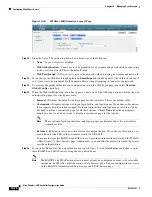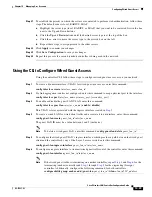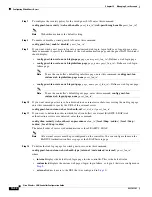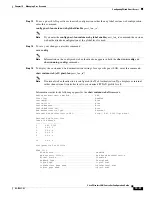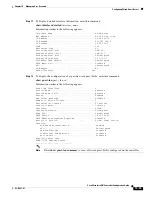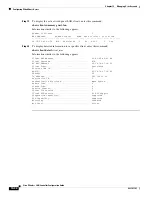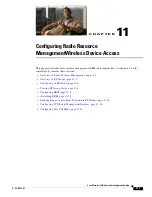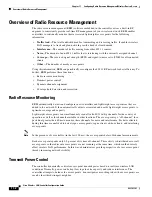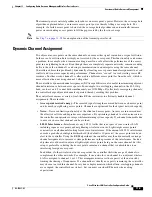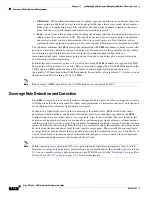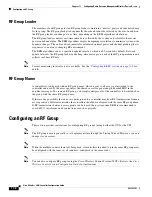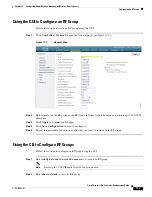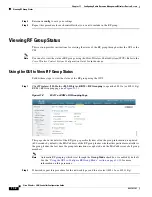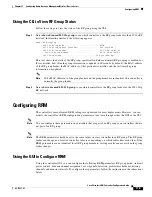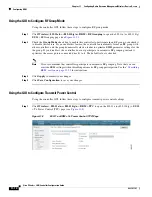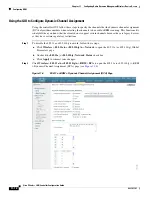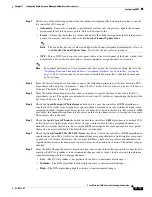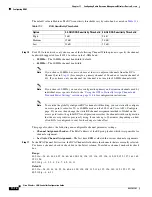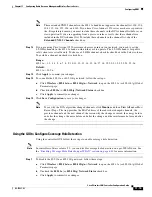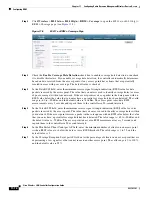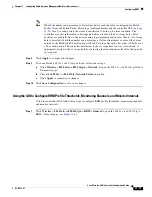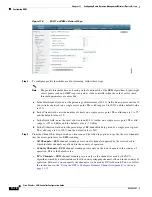
11-3
Cisco Wireless LAN Controller Configuration Guide
OL-17037-01
Chapter 11 Configuring Radio Resource ManagementWireless Device Access
Overview of Radio Resource Management
The transmit power control algorithm only reduces an access point’s power. However, the coverage hole
algorithm, explained below, can increase access point power, thereby filling a coverage hole. For
example, if a failed access point is detected, the coverage hole algorithm can automatically increase
power on surrounding access points to fill the gap created by the loss in coverage.
Note
See
for an explanation of the transmit power levels.
Dynamic Channel Assignment
Two adjacent access points on the same channel can cause either signal contention or signal collision.
In the case of a collision, data is simply not received by the access point. This functionality can become
a problem, for example, when someone reading e-mail in a café affects the performance of the access
point in a neighboring business. Even though these are completely separate networks, someone sending
traffic to the café on channel 1 can disrupt communication in an enterprise using the same channel.
Controllers address this problem by dynamically allocating access point channel assignments to avoid
conflict and to increase capacity and performance. Channels are “reused” to avoid wasting scarce RF
resources. In other words, channel 1 is allocated to a different access point far from the café, which is
more effective than not using channel 1 altogether.
The controller’s dynamic channel assignment (DCA) capabilities are also useful in minimizing adjacent
channel interference between access points. For example, two overlapping channels in the 802.11b/g
band, such as 1 and 2, cannot both simultaneously use 11/54 Mbps. By effectively reassigning channels,
the controller keeps adjacent channels separated, thereby avoiding this problem.
The controller examines a variety of real-time RF characteristics to efficiently handle channel
assignments. These include:
•
Access point received energy
—The received signal strength measured between each access point
and its nearby neighboring access points. Channels are optimized for the highest network capacity.
•
Noise
—Noise can limit signal quality at the client and access point. An increase in noise reduces
the effective cell size and degrades user experience. By optimizing channels to avoid noise sources,
the controller can optimize coverage while maintaining system capacity. If a channel is unusable due
to excessive noise, that channel can be avoided.
•
802.11 Interference
—Interference is any 802.11 traffic that is not part of your wireless LAN,
including rogue access points and neighboring wireless networks. Lightweight access points
constantly scan all channels looking for sources of interference. If the amount of 802.11 interference
exceeds a predefined configurable threshold (the default is 10 percent), the access point sends an
alert to the controller. Using the RRM algorithms, the controller may then dynamically rearrange
channel assignments to increase system performance in the presence of the interference. Such an
adjustment could result in adjacent lightweight access points being on the same channel, but this
setup is preferable to having the access points remain on a channel that is unusable due to an
interfering foreign access point.
In addition, if other wireless networks are present, the controller shifts the usage of channels to
complement the other networks. For example, if one network is on channel 6, an adjacent wireless
LAN is assigned to channel 1 or 11. This arrangement increases the capacity of the network by
limiting the sharing of frequencies. If a channel has virtually no capacity remaining, the controller
may choose to avoid this channel. In very dense deployments in which all non-overlapping channels
are occupied, the controller does its best, but you must consider RF density when setting
expectations.

